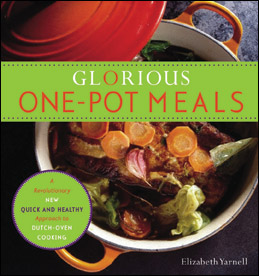This is something I have pondered for a while. My husband is trying to get me to switch to using my silicone baking sheet mat all the time, instead of the aluminum foil I often lay down to catch drips and make for an easier clean-up. But I’ve been resistant.
OK, I know that aluminum foil can leach aluminum into your food, which can lead to bad brain degeneration down the line, but are the silicone liners doing something just as bad? I mean, they are a form of plastic, after all. Do they emit vapors, fumes, or other undesirable things to contaminate our food?
The writer of Baking Delights blog put a lot of research into it, so read what she says. In the end, it seems safe to use the silicon bakeware. Phew. I guess my husband was right — again!


7 Comments on “Are Silicone Bakeware Safe and Non-toxic?”
If you have a business idea that you want to
discuss, please leave your comments below. Be paid cash for surveys, you
will subsequently actually get paid to take
surveys online and make money with these spending survey
makers. Once you have found a legit paid survey company site, sign up for a membership.
If you’re using parchment paper instead of silicone sheets, you’re not really avoiding silicone since modern baking parchment paper is treated with silicone.
Hi. I bought a silicone bakeware. The box recommends not using it at temperatures above 445F. My oven was in Celsius. I didn’t bother converting. I used it at 250C (482F). I noticed some brown stains at the side, not sure if they are burnt marks or stains. I would just like to ask if my silicone bakeware is still SAFE/ SUITABLE to be used or should I throw them out already. Thanks.
If silicon is inert, scorch marks won’t change that. I think you’re safe, even though it seems counter-intuitive.
I have been using silicone bake ware for a while and am happy with the easy to use of it.
However I just happen to look on the back of my cake molds and noticed an triangle with a number 7 in it.
That got me worried as that is associated with bpa toxin.
Your commends please
Jeanne, number 7 plastics are basically the “other” catagory. Many some safe, and some not. My boyfriend is a chemistry tech, and says it is one of the safest cooking materials due to the high heat tolerance, and the fact that it is inert. So while BPA containing products are also number 7, pure silicone products are BPA free.
I found the following info explaining that category 7 plastics define many different materials:
“Number 7 Plastics
Miscellaneous
Found in: Three- and five-gallon water bottles, ‘bullet-proof’ materials, sunglasses, DVDs, iPod and computer cases, signs and displays, certain food containers, nylon
Recycling: Number 7 plastics have traditionally not been recycled, though some curbside programs now take them.
Recycled into: Plastic lumber, custom-made products
A wide variety of plastic resins that don’t fit into the previous categories are lumped into number 7. A few are even made from plants (polyactide) and are compostable. Polycarbonate is number 7, and is the hard plastic that has parents worried these days, after studies have shown it can leach potential hormone disruptors.”
From: http://www.thedailygreen.com/green-homes/latest/recycling-symbols-plastics-460321#ixzz1cCVAm7IC
The silicone stuff still makes me a bit nervous. My favorite trick is baking on parchment paper. It works great and, in many cases, it can be re-used.
Comments are closed.